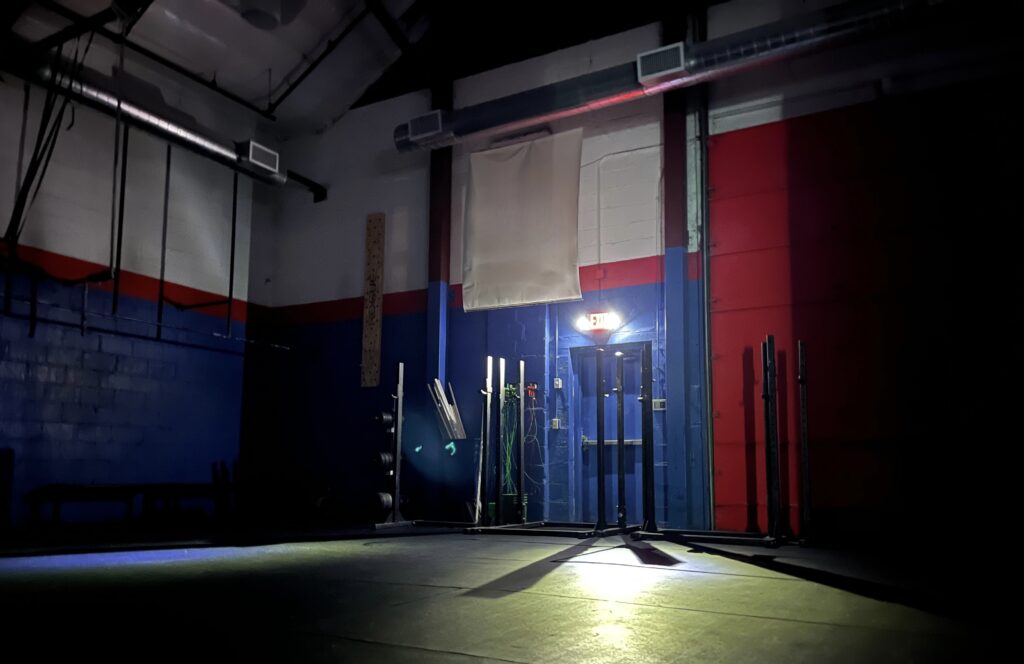
How Lisa Found Freedom With FitFilliate
She’d done it.
After falling in love with the methodology that had saved her life, Lisa Kirkman bought a CrossFit affiliate in 2014. She’d spent the next six years devoted to the dream she’d sweat, bled, and shed for: helping others change their lives with CrossFit.
So why was she so fucking miserable?
It’s a special kind of fear when a dream becomes a nightmare.
Stomach-dropping, breath-stopping, paralyzing terror, rivaled only by the loneliness and disillusionment that accompanies it. What do you do when the thing you thought would bring you freedom feels more like a cage?
But before you can break free, you have to see the cage in the first place. And Lisa, like most affiliate owners (and most humans in general), was so focused on scraping the rust off the bars she never considered just walking out the door.
It makes sense. In the beginning, CrossFit was freedom for Lisa.
She’d started in 2011 at 37 — and after a lifetime of exclusion and judgment, CrossFit felt like home. A tomboy who loved Army games and hated dresses, Lisa never felt like she fit in her small rural hometown. The CrossFit gym was the first place where her strength was celebrated and it didn’t matter what she looked like.
It also didn’t matter what she wrestled with. Like the fact that after nine years of marriage, she’d begun questioning her sexual identity.
She’d often drive to the gym in tears.
“I’d wipe my face in the car park and I’d get out,” she said, “because I knew when I stood on the black mats, none of that mattered.”
Lisa bought her own gym in 2014 to create that same haven for others. A place where someone could feel “welcome and included from Day 1.”
And she did. At Lisa’s gym, the loudest cheers went to those in last place, and no one packed up their gear until the last person was done.
By 2018, the affiliate had 80-some members and the seeds of success.
“But then we could never consistently maintain that,” Lisa said.
Staffing was a problem: It was hard to find coaches and harder to keep them. COVID-19 hit and strained the community.
And then there were the people problems. Despite Lisa’s devotion on and off the coaching floor, she found herself clashing — at times, explosively — with both members and staff.
“Every day I was fighting,” Lisa said. “And every day I would wake up, (thinking) like, ‘How do I not fuck this up today?’”
There is no shortage of answers to that question — and Lisa collected them all. She read articles, attended seminars, and downloaded templates. Nothing worked.
And when she came to FitFilliate in the summer of 2020, she still sought answers: “Why can’t I get my staff to do what I want them to do? Why am I so polarizing? How do I get my team to work together?”
Instead of answers, she was met with a question.
“Tell me about the dream. What does it look like if everything goes right?”
And to every answer she gave — both then and in the weekly calls to follow — Tony, her coach, asked a question in return: “Why?”
The goal wasn’t to be obtuse. Answers to business problems are easy and abundant. But the answer to why, with all the world’s knowledge at your fingertips, are you still in the same situation? That requires cutting back a few layers — straight down to the core.
“Who is Lisa?” Tony asked one day.
“I’m a coach,” Lisa replied. “I’m an affiliate owner.”
“No,” Tony responded, “that’s what you do. Who is Lisa?”
The question gripped her and would not let go.
In the weeks that followed, Lisa considered — truly considered — why she’d opened the gym in the first place.
“I started to realize that I’d built the gym so I had somewhere to belong to,” Lisa recalled. “(That) the gym was just to fill gaps in my life, to give me purpose — if I’m an affiliate owner and a coach, no one will see this emptiness that sits behind me.”
A few months later, Lisa had an answer.
“I think I’m gay,” she said.
“OK,” Tony responded. “So what are you going to do about it?”
But there was still one thing that needed reconciling: the gym.
“I had so desperately fought for the gym over seven-and-a-half years because that was how I created my identity, but I didn’t need that anymore,” Lisa said.
“I need to get out,” she told Tony.
“Cool,” he said. “Let’s make that happen.”
Not that it was easy. In a society that measures success in dollars, closing a business hardly seems to fit the bill.
But through coaching, Lisa learned a fundamental (and life-altering) lesson:
“Your definition of success doesn’t have to be the same as everybody else’s,” she said.
Lisa closed her gym later that year. By 2022, she and her husband had amicably divorced. And by the end of 2023, Lisa and Sharon were married — the couple now live in their dream countryside home with their dogs. And Lisa’s new project? Telling her story — and empowering others to live a life of authenticity and self-acceptance.
“Particularly for women who come out late in life,” she said.
Looking back, Lisa doesn’t see her affiliate as a failure. She changed lives in that gym — including her own. And that might be the greatest success metric of all.
“It was like, ‘Oh, I’ve opened an affiliate … I’ve got to the top of Everest,’” she said.
“And you don’t realize that it’s really just base camp one.”
